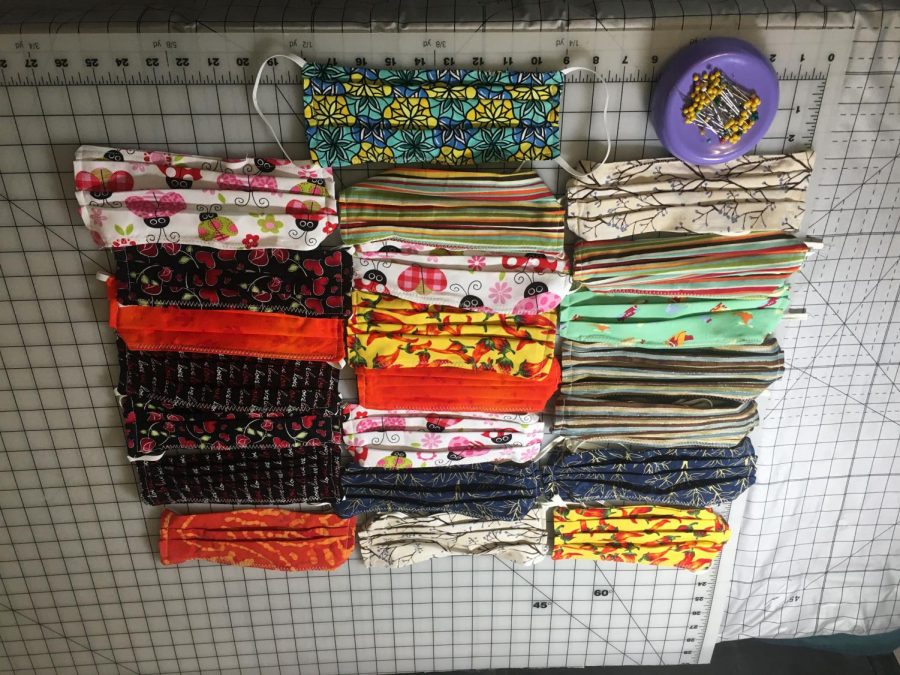The sound of the sewing machine filled the house after work. On the weekends. Each mask takes about an hour to make, a little less if done in an assembly line.
Cut.
Pin, pin, pin.
Sew, sew, sew.
Turn it right side out.
Pin, pin, pin.
Sew, sew, sew.
Snip.
Add the mask to the done pile.
I was connected to a group of sewists in Petaluma through a colleague and I began bringing masks to the group to be distributed to non-profit organizations that needed masks for their communities. I contributed 15 masks. Then another 10 masks. Then another 27 masks. Meanwhile the group was donating 200 masks, then 600 masks, then we were over 1000 masks.
We were a community that was no stranger to crisis. For three Fall semesters in a row, the college had shut down due to wildfires in the community, excessive smoke from wildfires in neighboring communities, power shut offs to try to prevent wildfires. And for each shutdown I had felt somewhat helpless. I had stayed home, worn a respirator mask when I left the house, and evacuated when requested. Each shut down brought with it a little more PTSD, a little more anxiety and the passing desire to become a firefighter so that I could be more useful than a bystander pushed to the sidelines.
And now we needed masks, and I knew how to sew, and there was an excess of fabric in the house from previous quilting projects. And so I made masks.


